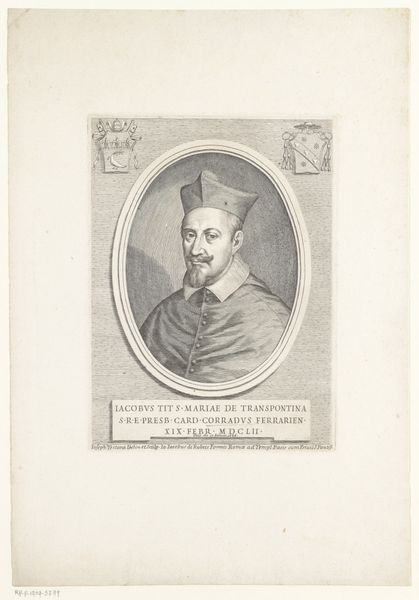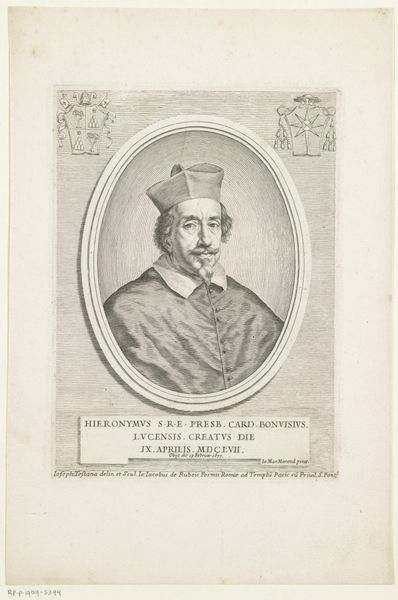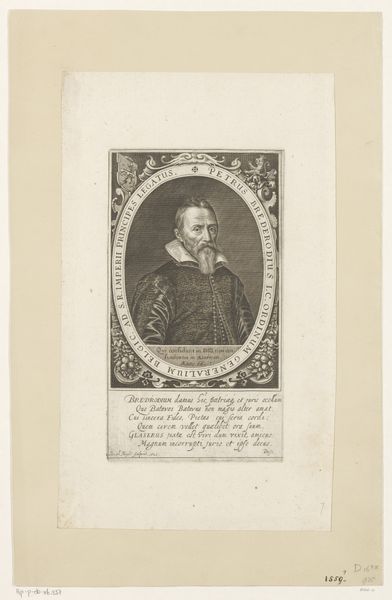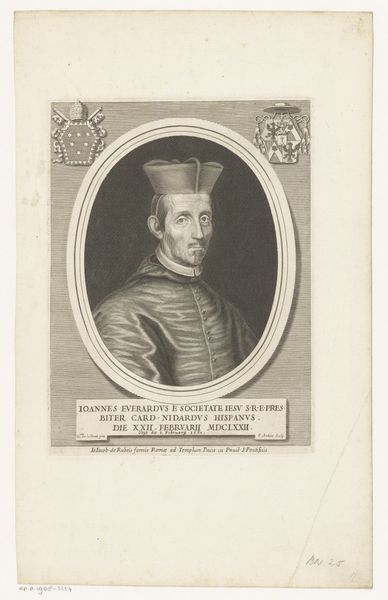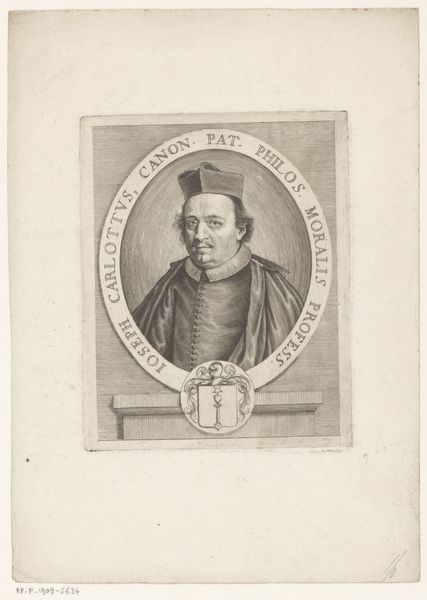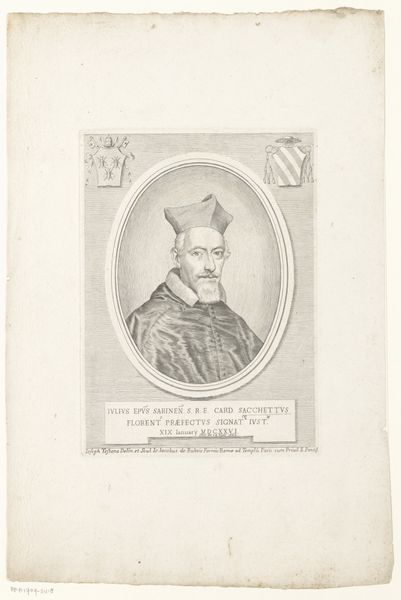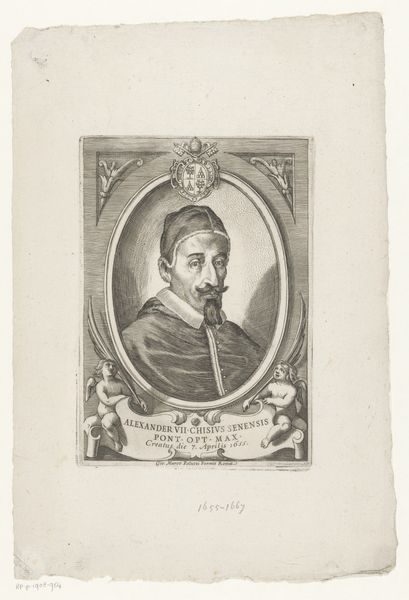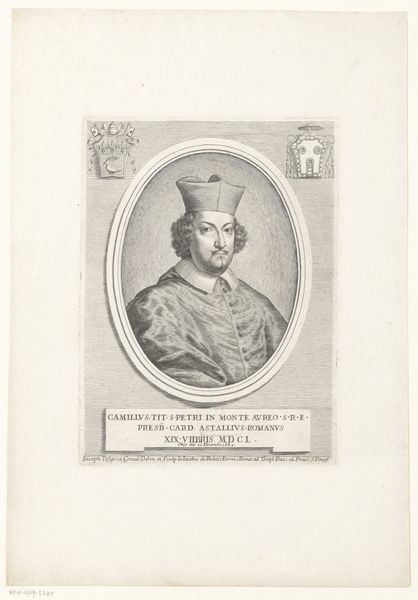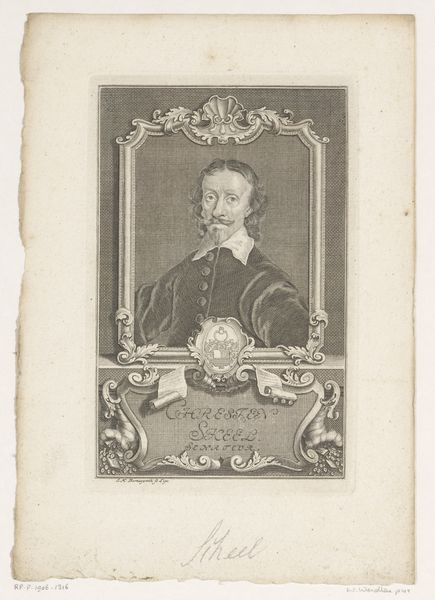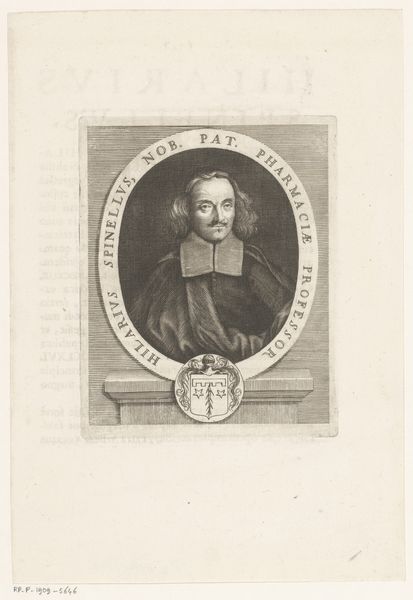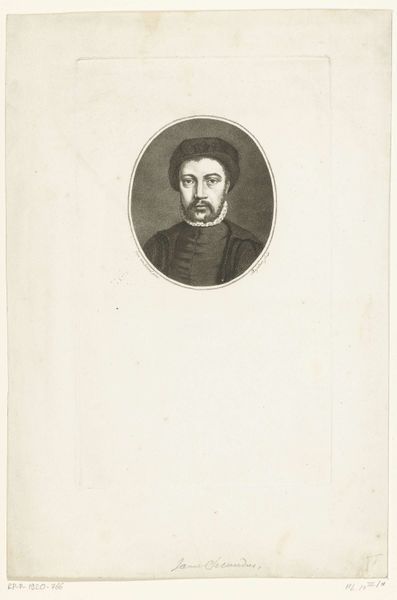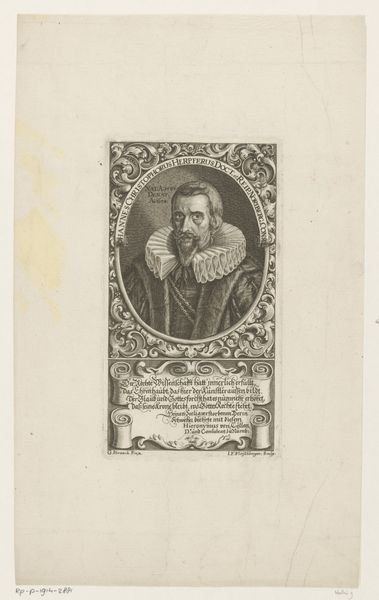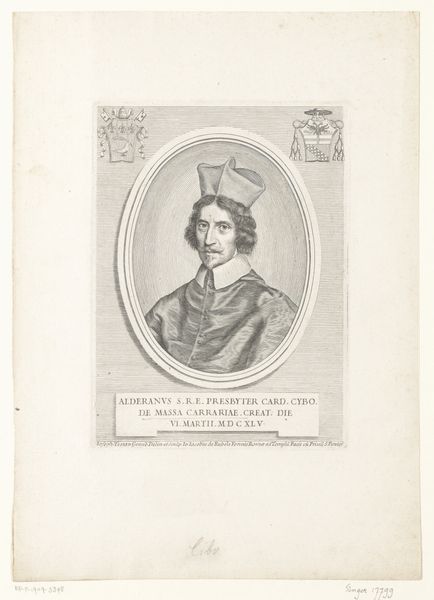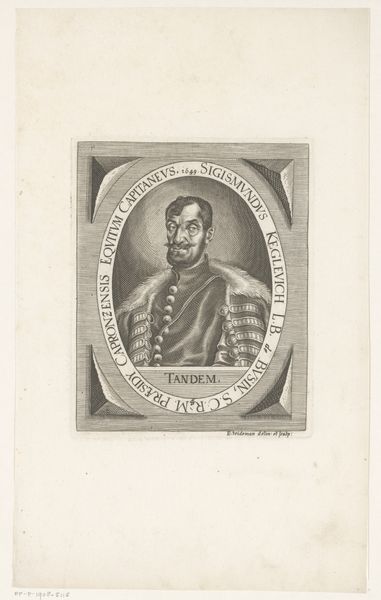
print, engraving
#
portrait
#
baroque
# print
#
old engraving style
#
line
#
engraving
Dimensions: height 195 mm, width 144 mm
Copyright: Rijks Museum: Open Domain
Curator: Let’s look now at the print "Portret van Cesare Facchinetti" by Etienne Picart, dating sometime between 1658 and 1676. What catches your eye first? Editor: The lines are incredibly crisp. I'm immediately drawn to the density of the engraving. You can almost feel the pressure of the burin on the copperplate, it gives real dimension to the cleric's robes. Curator: Absolutely, the intricate linework speaks to the skill involved, especially when you consider the social and religious contexts. Facchinetti was, as the Latin inscription suggests, elevated to Cardinal in 1643, a position imbued with enormous power and privilege. Editor: And that power translates into patronage. I wonder about the specific tools Picart used and how workshops trained engravers like him to meet the demand for these types of prestige portraits. Were they using state-of-the-art techniques at the time? The details on the face are extraordinary. Curator: These kinds of portraits played a critical role in visually solidifying religious hierarchy. Beyond mere representation, they asserted authority, subtly influencing the observer's perception of religious figures. The gaze, for example, projects self-assuredness. Editor: And I'm sure the dissemination of the print helped spread influence too. The making of prints makes the cardinal accessible to an array of people far beyond his physical presence. Thinking about the audience shifts the understanding of the portrait’s meaning too. Curator: Precisely. It reminds us that artworks are often tools, intentionally employed within intricate webs of power, especially those produced under strict regimes and widely circulated. Editor: Well, considering its historical and political layers, the print invites an awareness of not just the cardinal in his regalia, but also the engraver with his materials and tools to translate all these subtle signs into a lasting mark on the historical consciousness. Curator: It underscores the fact that looking closely reveals broader stories about both power and production. Editor: Indeed. A simple object, yet profoundly suggestive.
Comments
No comments
Be the first to comment and join the conversation on the ultimate creative platform.
